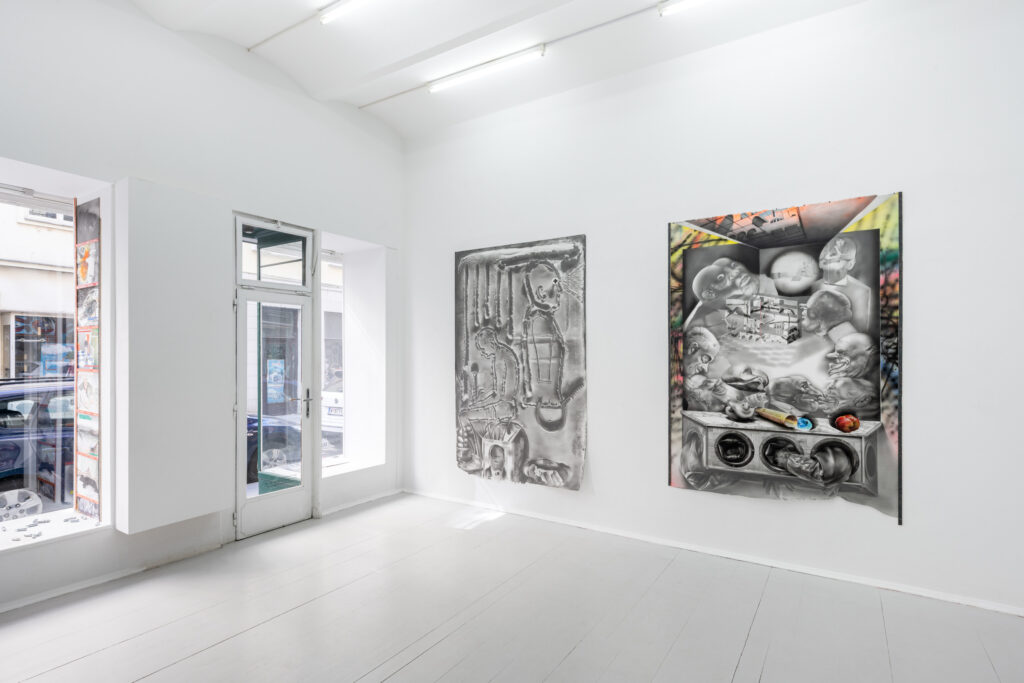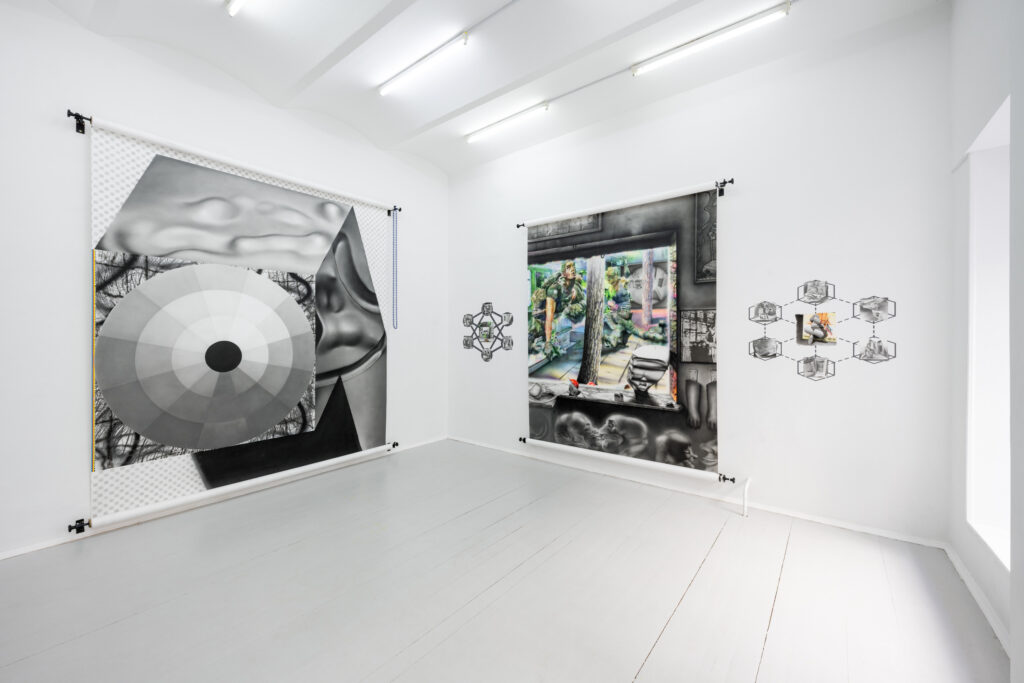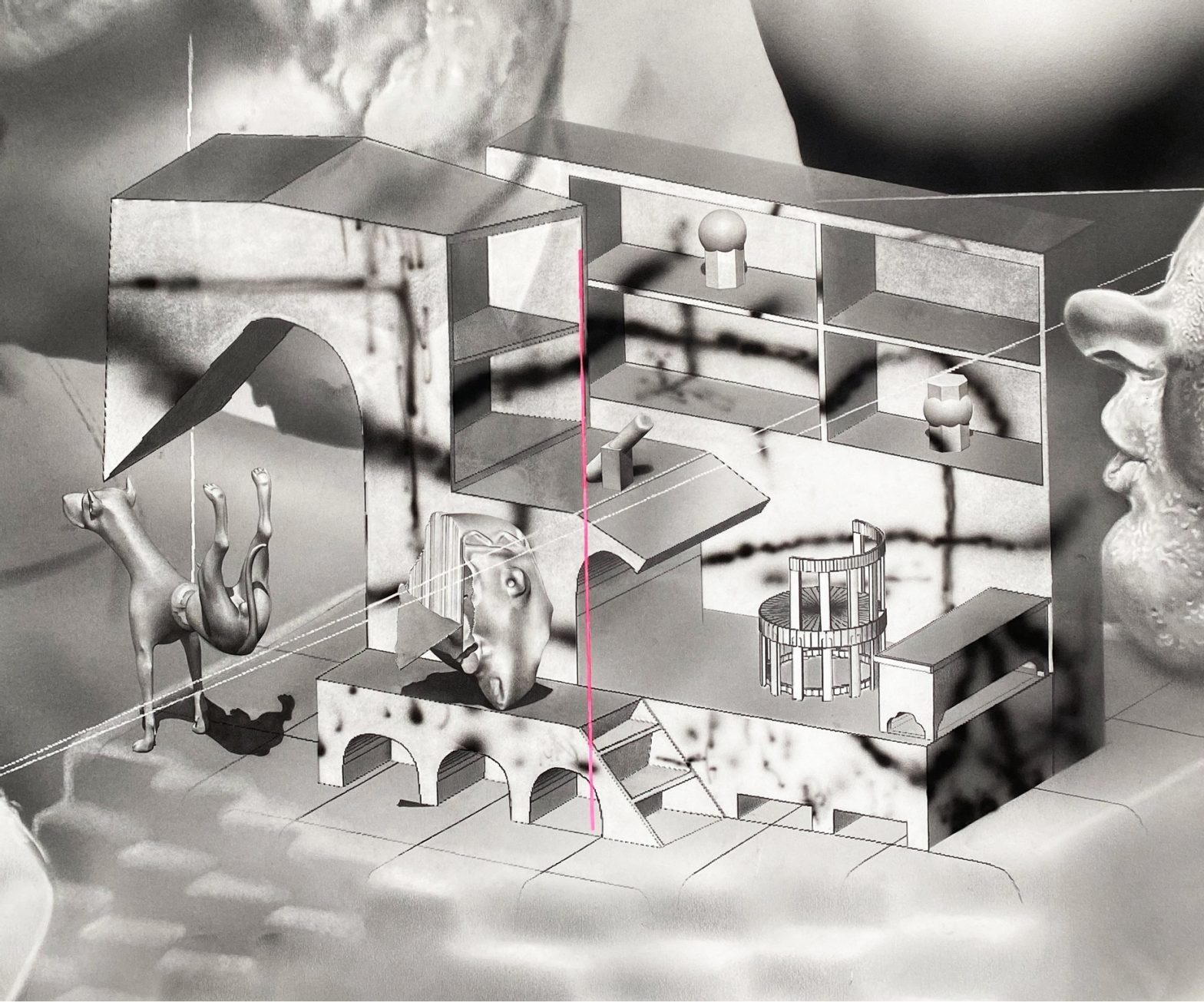KOENIG2 by_robbygreif, Vienna | September 4 – October 16, 2021


A quantum narrative is at work in the most recent drawings of Robert McNally: within them the artist unfolds the intricacies of the digital realm while maintaining an intimate relation to the analog craft of drawing. His constructions evoke a certain kind of anachronistic and abstracted storytelling, one that feeds on the paradox, the surreal, and the subconscious. The ambiguity of in-between states, which are enclosed by dichotomies like slow and fast, technique and medium, viewing and depicting as well as inert and accelerating, is of central interest for McNally’s structural methodology. His depictions are entropic, overwhelmingly saturated with information, but simultaneously sharpening our senses for the absurdities of our existence.
Titled ‘The Metawürst’ his first solo exhibition in Austria at KOENIG2 by_robbygreif draws a clear line to the ‘Metaverse’ – the totality of all virtual worlds, spaces, augmented and physical realities and the internet as first defined by Neal Stephenson in his sci-fi novel ‘Snow Crash’ from 1992. Each of McNally’s large works function like chapters in a novel. While all of them are independent from the other and interchangeable in the way we ‘read’ them in their sequencing, their implicit symbolic forms, tropes and motives serve as clues that may help us to decipher and resonate with some of them. The second part of the title, ‘würst’, is a play on words, a metaphorical suggestion that points to the filling of paper with data and stimuli – quite in the same way a ‘Wurst’ or sausage is produced, crammed to the edges with a mélange of processed parts.
Robert McNally’s narratives manifest in fictitious worlds which are bound to forces of gravity and physical principles within their own reality. ‘Z Manifold’ is one example of such complex layering of time and materiality. Set behind a colorful foreground of blurred airbrush colorings and graffito lines, the artist opens up a rectangular grisaille as an image within the image. It hosts a party of eight heads, arranged in a circle around the cross-section of an isometric model depicting the vestibule from Antonello Da Messina’s ‘St. Jerome in his Study’. A marble topped wooden interface is positioned in the foreground beneath them, making the image itself flatter in appearance, almost mirror-like. The number eight appears again in the eight holes of the wooden interface, from which arm-long rubber gloves emerge as if coming from a testing booth. Colorful objects are placed on the marble counter, a rolled-up map, the bust of a head that is somehow looking through its own self, a poorly rendered digital red apple, and a second blue apple that lacks the magenta or yellow color components, as we view it part-formed and in the process of (dis)appearing before our eyes. But the core of it all, the real center, is almost hidden in plain sight. It is another image within the image, this time behind the middle-ground where the majority of the activity takes place. In a secret room a projection-like tondo depicts a person sitting behind a small desk with a primitive computer in front of him, monitoring the activity all the way through to the front of the drawing. This exact room is where we find ourselves in within the twin work ‘Inlet Manifold’. From it we emerge on a projective journey into another surreal space, one in which we are confronted with another reality that is virtual and full of enigmas.
All of the works within the show can be characterized as landscapes, situated in-between internal and external modes of perspective and bridging both the realm of the physical as well as the metaphysical. This is also true for ‘Operator’, a work in which “history, time and truth are moldable like clay” as the artist puts it poetically. The drawing indeed is the witness to a molding in clay of two figures facing away from each other. The three-dimensional quality is graspable through the intense haptics of the figures, seeming to come from a finger-drawing and gestural scratching of the alleged clay surface. Screws, pickles, an apple, an aloe vera plant, potatoes, cardboard, a light switch, a box with portraits on it, mesh wire, all and more find their place on this plain. Robert McNally’s often humorous and sometimes dark works are parody hybrids of reality. Their enigmatic, surreal scopes maintain not only a unique narrative structure but become manifest as material thickness in time.
